Dry gardens: how to design and create a drought-tolerant backyard
Dry gardens can be an oasis with shady trees, low-water plants and heat-tolerant flowers for pops of seasonal color. Our experts show you how...

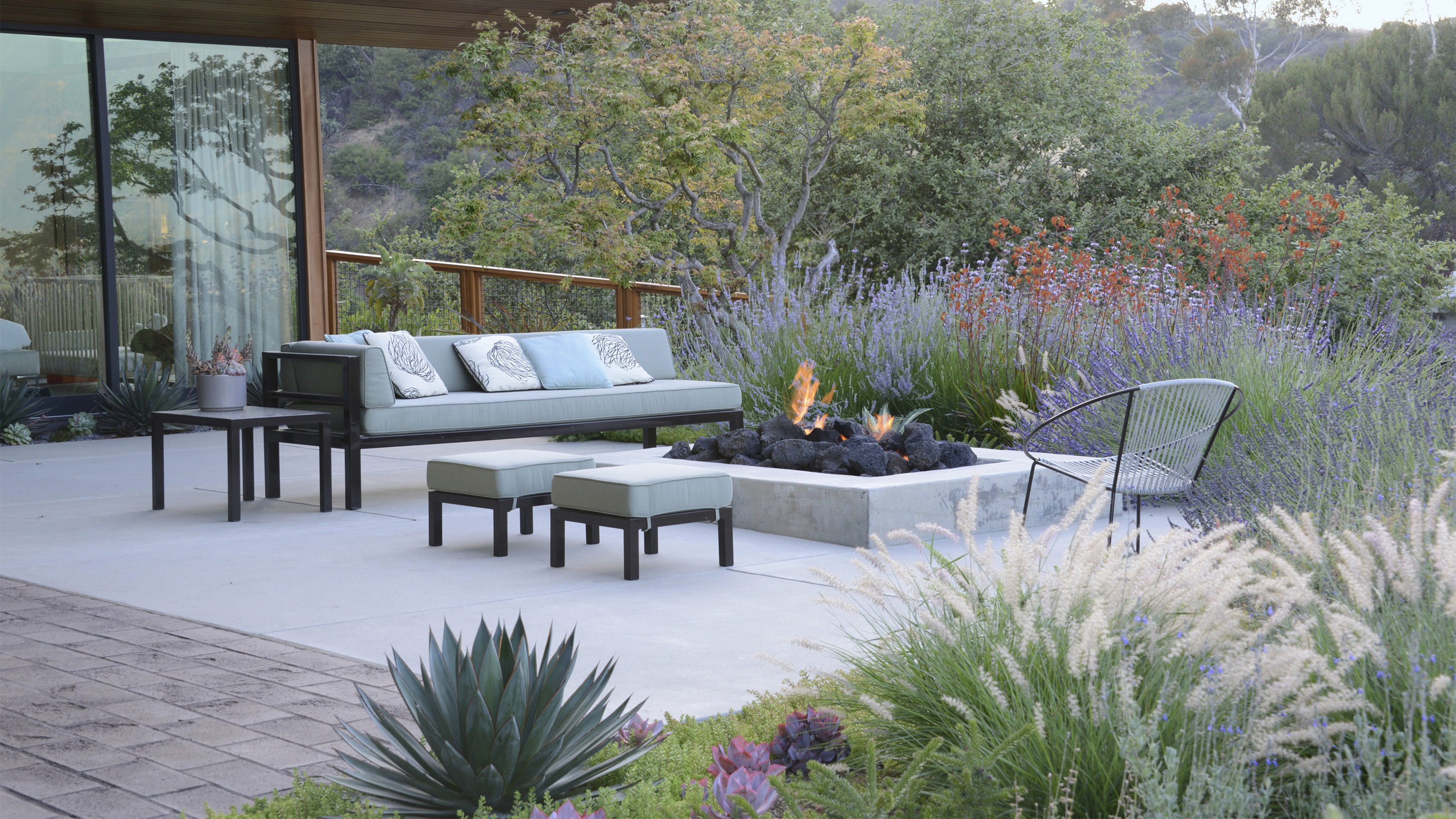
If you live in a low-rainfall area or have sandy, free-draining soil, dry gardens might be the ideal style for your backyard.
Drought-tolerant plants offer an easy way to create a beautiful dry garden. Combining succulents, cacti and low-water trees, shrubs, grasses and flowers will deliver a colorful show year-round, that requires little maintenance once established, while protecting precious water sources.
We have seen increased periods of hot, dry weather in recent times. So instead of struggling to carry on with traditional garden styles, which require lots of irrigation, a sustainable and low maintenance garden option is to dispense with watering altogether.
'Dry landscaping or xeriscaping is a method that uses drought-tolerant planting and preserves nature’s water resources while still providing a lush garden of native flowers and foliage,' explains Kendall McCumber, owner of Santa Fe-based design and landscaping company, McCumber Fine Gardens.
'This means dispensing with a traditional lawn that needs regular irrigation in dry climates, and using instead either native grasses or other drought-adapted plants as ground cover. We also use trees and resilient hedging to help to cool the soil and slow evaporation, together with other low-water plants that tolerate long periods without rain.'
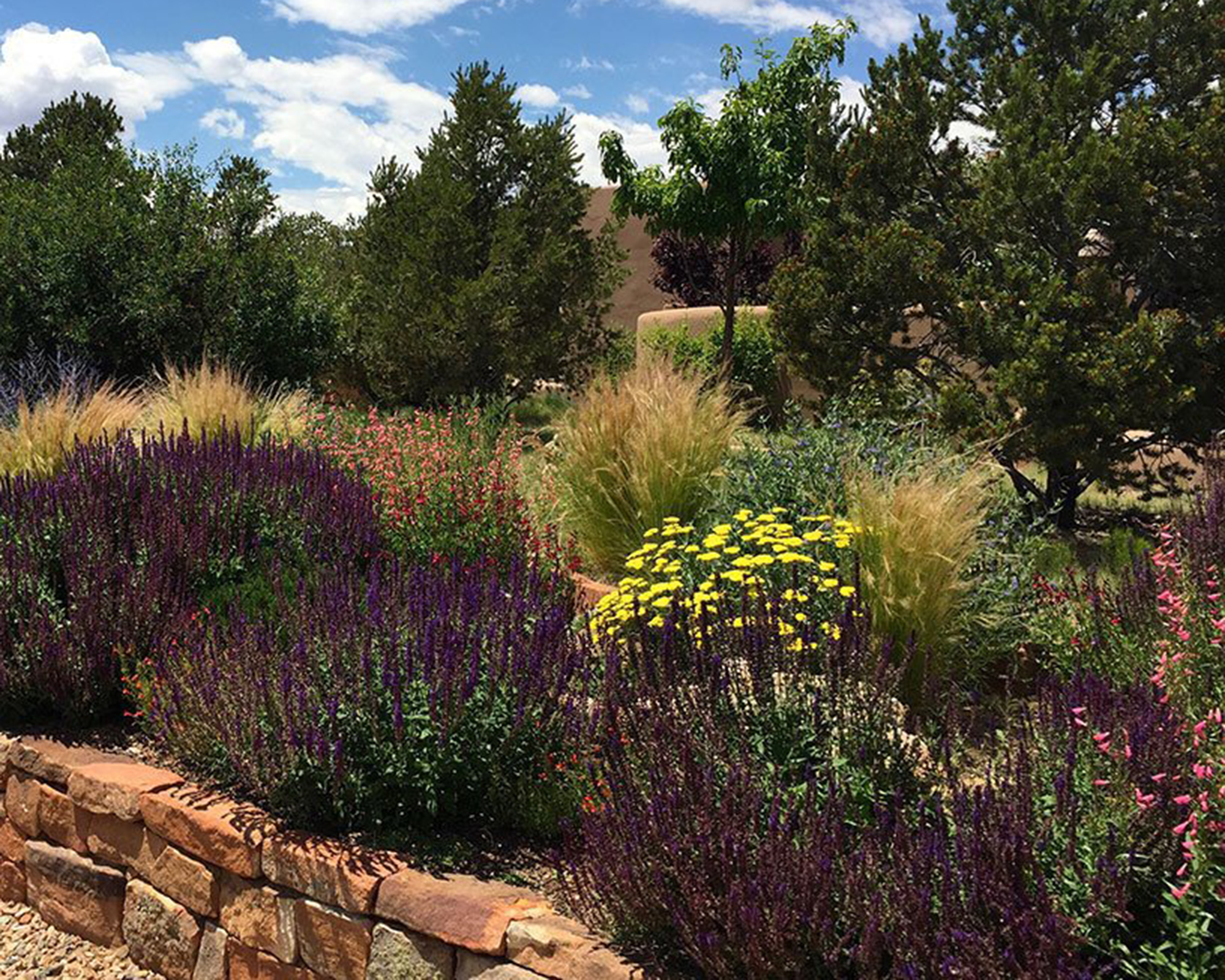
12 easy steps for creating successful dry gardens
The key to success with dry gardens is choosing drought-tolerant plants suited to your climate, site and soil, and to plant them correctly to ensure they thrive. Also add a shaded seating area and a water feature to animate your space and support birds and beneficial insects.
Follow these expert steps for creating the perfect dry garden. From planning the optimum use of space to selecting plants which are ideal for dry conditions, we've got all the advice you'll need.
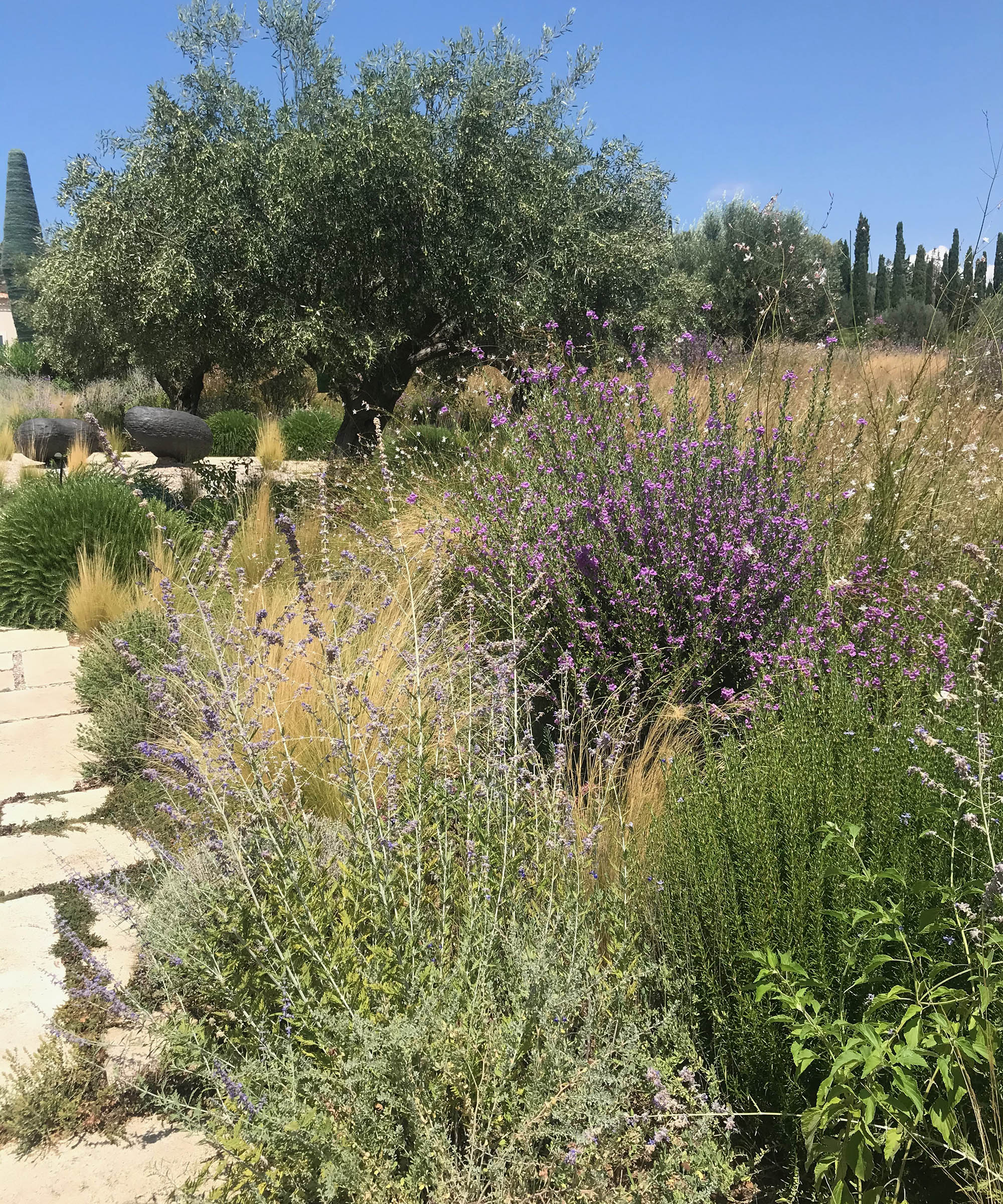
1. Assess your site conditions
Drought-hardy plants prefer basking in full sun, but many dry gardens, especially those in the city, have areas of shade too, so it’s important to assess the light levels throughout your plot, and match up each area with plants that enjoy those conditions.
'Also check your garden’s temperature extremes, especially in winter,' advises award-winning garden designer Tom Hoblyn. 'My practice is in Suffolk in the UK where the annual rainfall is lower than in Mediterranean regions of France, but winters can be very cold.'
'However, some tender drought plants make it through, if their roots are kept dry and the stems have developed enough protective wood through the spring and summer to withstand the low temperatures.'
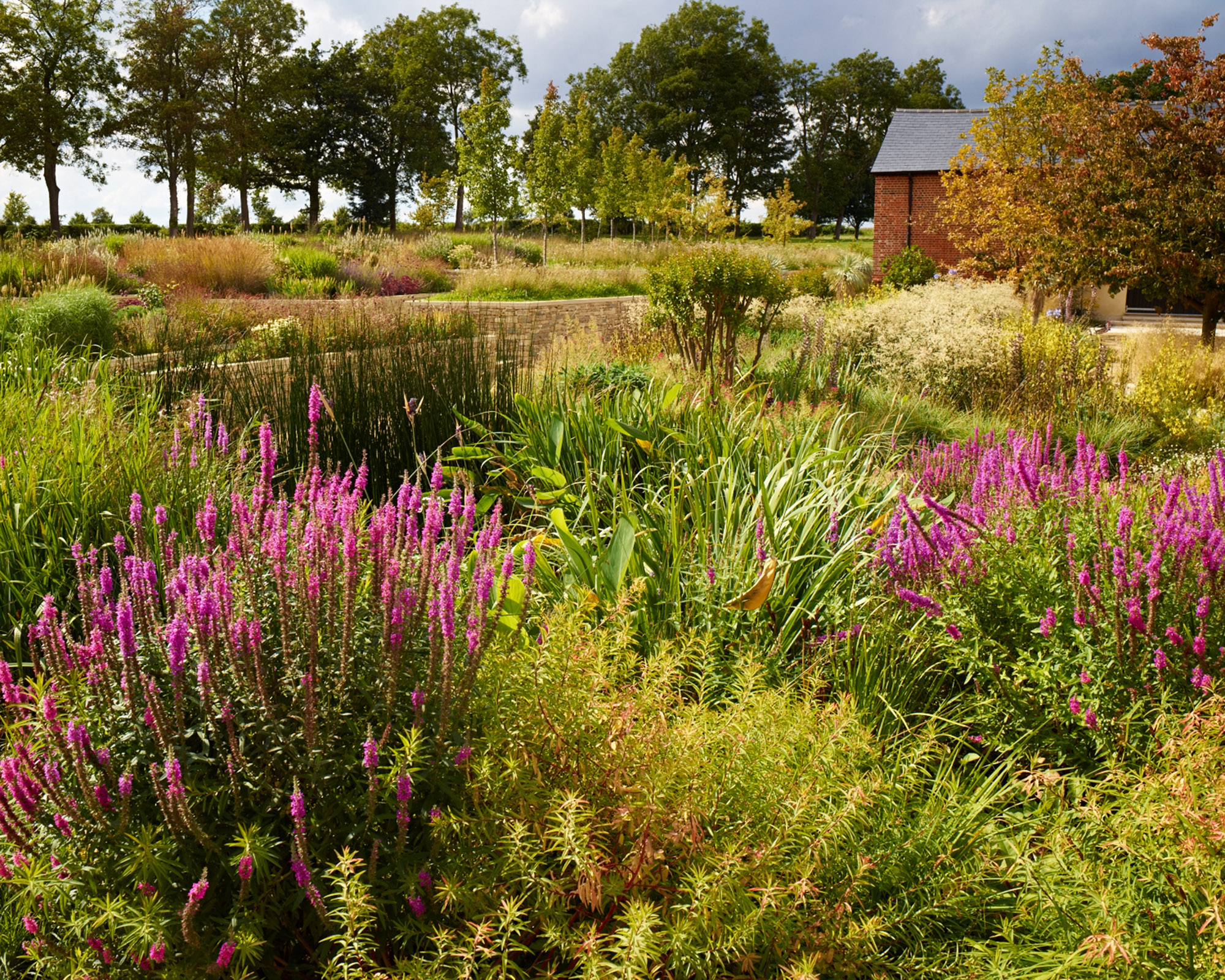
2. Check your soil is suitable for a dry garden
Many low-water plants will grow in the most inhospitable of soils, but they must drain well so that the roots are never sitting in waterlogged conditions. In gardens with wet clay soils, try planting in raised garden beds to provide them with sufficient drainage.
'Some Mediterranean plants such as lavender and thyme will even grow in a layer of crushed building material,' adds Tom. 'A free-draining subsoil with the top 3in (8cm) made up of 80% sand, gravel or rubble and just a little soil is ideal.
Another benefit is that there are few perennial weeds that will grow in sterile, low maintenance landscaping, and those that do manage to germinate are easy to remove.'
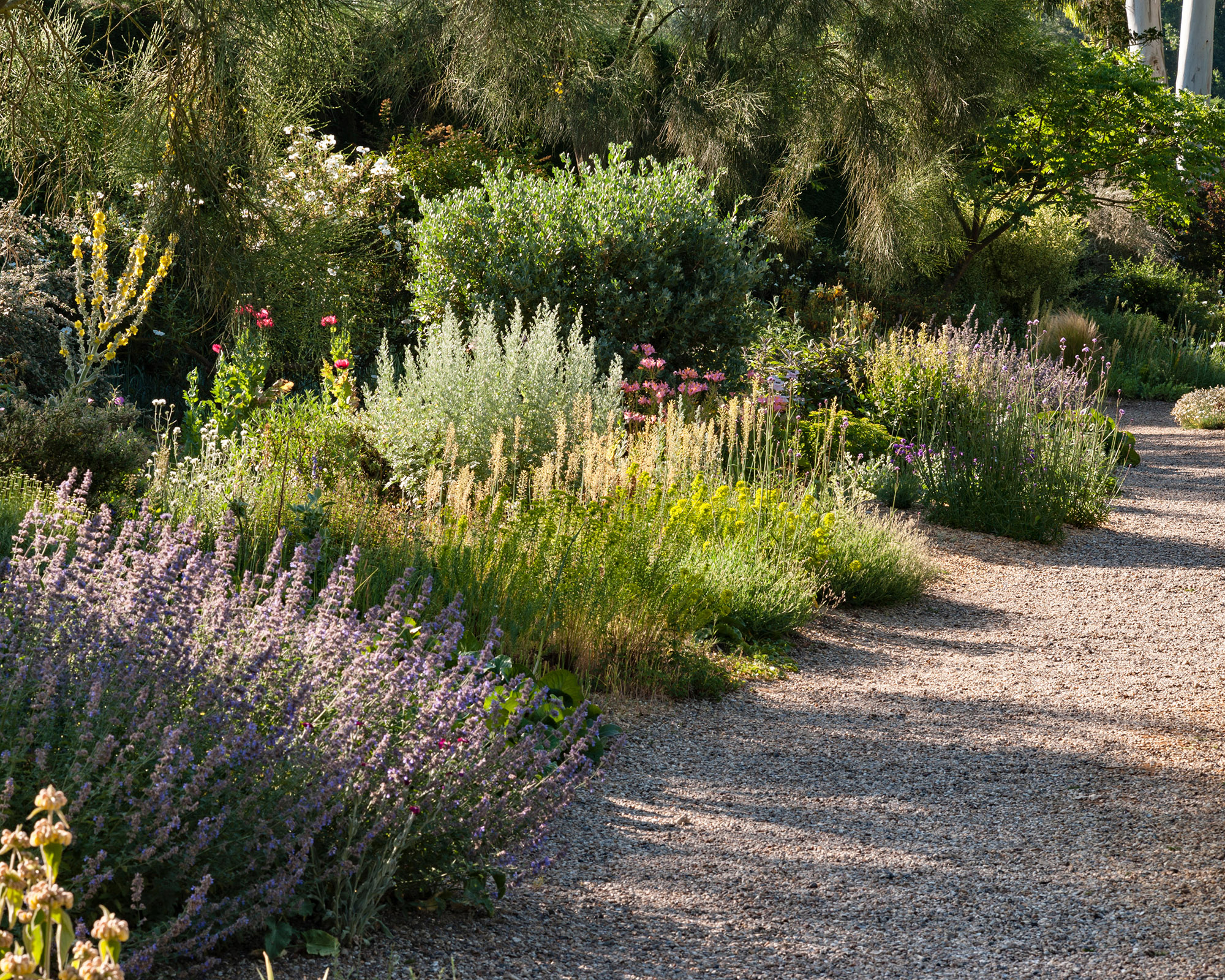
3. Make a simple plan
Plan out your dry garden in advance with a simple hand-drawn sketch. Or use a computer design program, identifying existing trees and plants and other features, that you want to keep, as well as the light patterns, showing areas of sun and shade.
Then mark out where you want your seating, water features and planting. Kendall McCumber, suggests utilizing a zone system for the plants.
'Zone 1 can be a small oasis near the house, perhaps with colorful container planting that will need the most water, but also have the greatest impact,' says Kendall.
'In zone 2, the transition zone, include plants that need minimal supplementary water, and in the outer zone 3, away from the house, include native wildflowers, ornamental grasses and shrubs that will require no irrigation once established. Try landscaping with boulders or adding rocks to low maintenance borders, if the area needs more structure.'
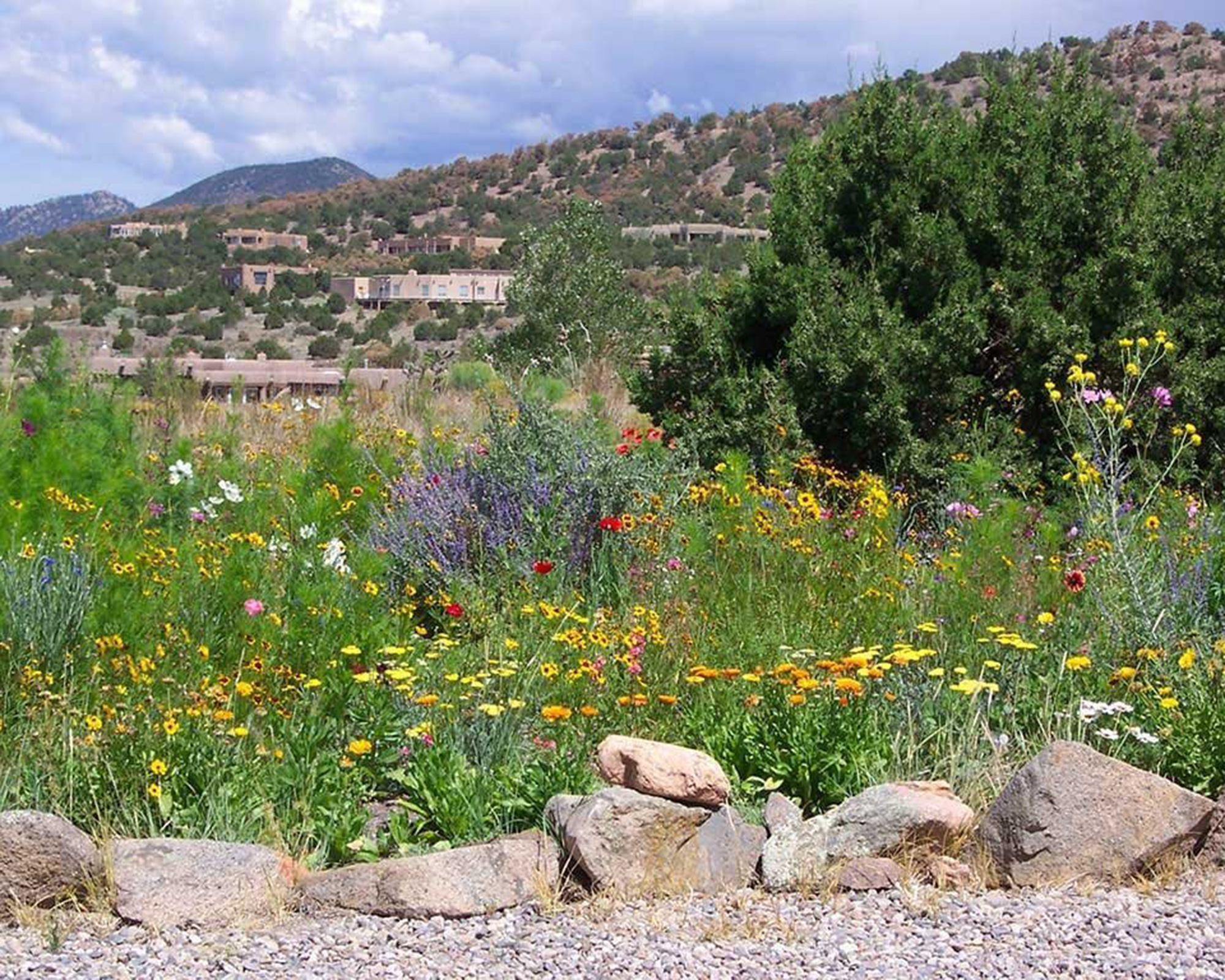
4. Introduce shelter and shade
'Make seating and dining areas where you will be protected from the sun, either under a tree or a pergola, which you can cover with a climber such as wisteria, or where the house provides shade. Alternatively, if space is limited, a beautiful patio umbrella would do the job,' advises Californian designer Judy Kameon of Elysian Landscapes.
Including a few new low maintenance trees or a line of hedging plants is another way to introduce cool shade for people and for plants. Many of which will thrive in the dappled light at the edge of the canopy, protected from the burning midday sun.
Trees cool the air, too, releasing moisture through their leaves which lowers ambient temperatures.

5. Select eco-friendly materials for a dry garden
Garden and landscape designers advise using local stone or aggregates for patios in dry gardens. Ones that will not need to be transported thousands of miles to reach your yard.
Tom Hoblyn suggests looking at the local terrain for inspiration: 'In a country garden, use stone that reflects the landscape beyond the boundaries to create a harmonious visual link, and minimize your carbon footprint. In city gardens, I tend to ring the changes, matching materials with architectural features.'
'For example, in a scheme in Cambridge in the UK, which is a dry city, I’ve used a locally quarried rusty orange carrstone to match the house bricks, with light gray limestone stepping stones that reflect the building’s zinc metalwork.'
Judy Kameon, who also owns outdoor hand-crafted furniture company Plain Air, uses comfortable well-made seating that will not crack or fade in hot, dry climates. 'We tend to choose robust pieces that are not too dark in color, which would absorb the heat.'
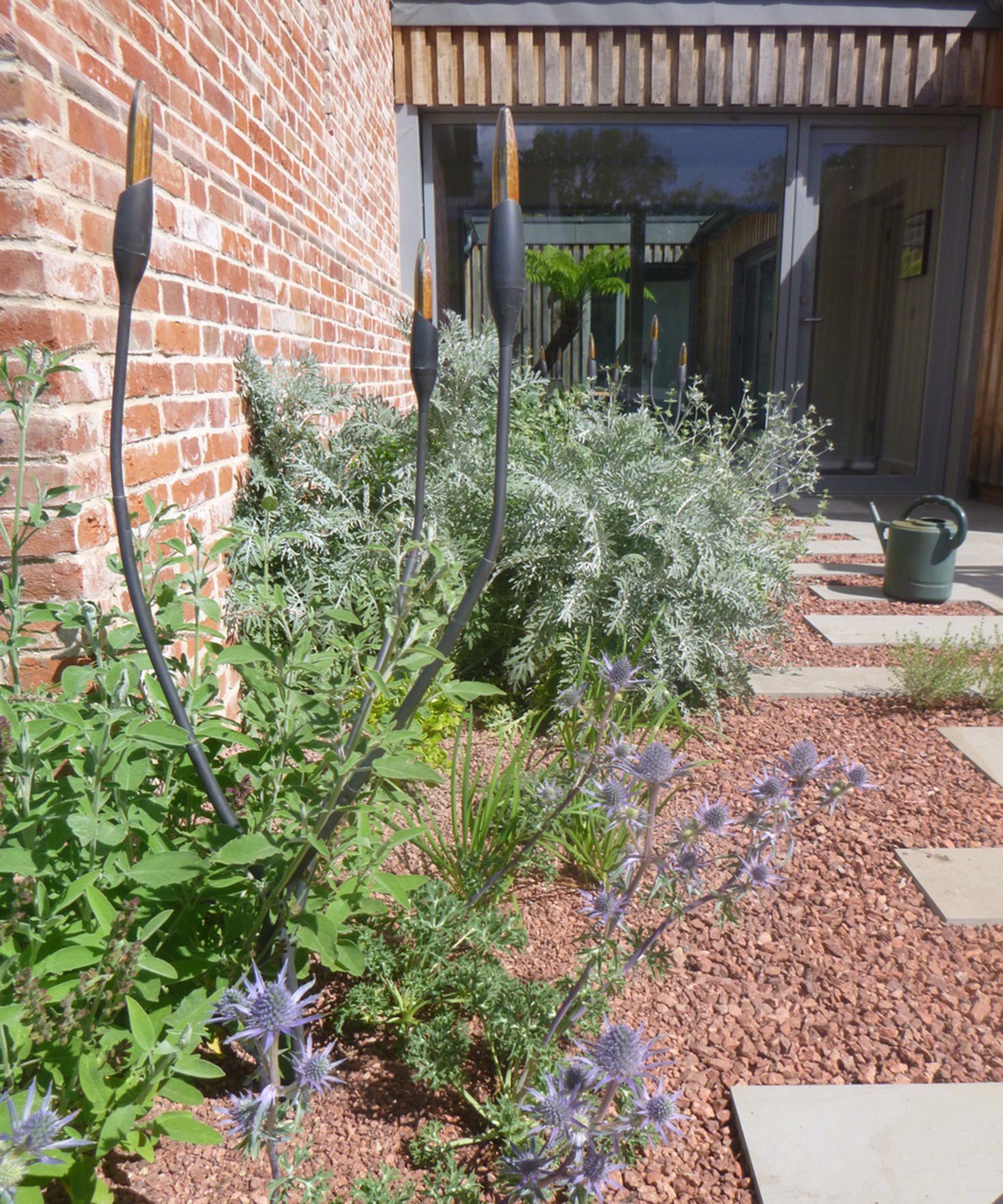
6. Choose drought-tolerant trees and shrubs
Tom’s favorite trees for sunny, dry gardens include the downy oak (Quercus pubescens), ideal for large garden ideas, and the compact evergreen Greek strawberry tree, Arbutus andrachne, which has beautiful cinnamon-colored peeling bark, dark green leaves and small white urn-shaped flowers followed by red fruits.
Judy Kameon recommends another species of strawberry tree, Arbutus × reyorum 'Marina', which has red stems and pink flowers. She also loves Cercidium ‘Desert Museum’, a thornless hybrid of the US native palo verde tree, which produces long-lasting bright yellow flowers in spring and summer and grows well in USDA zones 8 through 11.
'The cork oak (Quercus suber) is another favorite, with its textured bark and elegant habit,' she adds.

7. Layer foliage and flowers in dry gardens
Use low maintenance shrubs, succulents and perennial plants to create a structural layer of landscaping around trees. Try combining spiky yuccas, phormiums, and agaves, with rounded shrubs such as myrtle (Myrtus communis) with its glossy leaves and white summer flowers and dark purple berries; soft, silvery artemisia; and Australian rosemary (Westringia fruticosa) with its gray-green foliage and small pale-blue flowers.
Landscaping with cactus will also provide texture and structure, as well as flowers, in sunny gardens where winter rainfall is also low – some will not tolerate temperatures below freezing.
Judy Kameon combines natives and non-native flowering plants to introduce color, too. Her favorites include the fragrant native Cleveland sage (Salvia clevelandii) and South African evergreen shrub Leucadendron salignum 'Blush', with its red new foliage and bright red late-winter flowers.
She contrasts these with grasses such as Lomandra longifolia ‘Platinum Beauty’, which is hardy to 15˚F (-5˚C), to add movement and texture. Judy adds: 'For shady areas in warm climates try the succulents Senecio decaryi and Crassula multicava ‘Red’, with its green and burgundy foliage; the strappy blue-leaved perennial Dianella ‘Blutopia’; and spiky Astelia ‘Silver Shadow’, which delivers a bright metallic note with its silvery blades.'
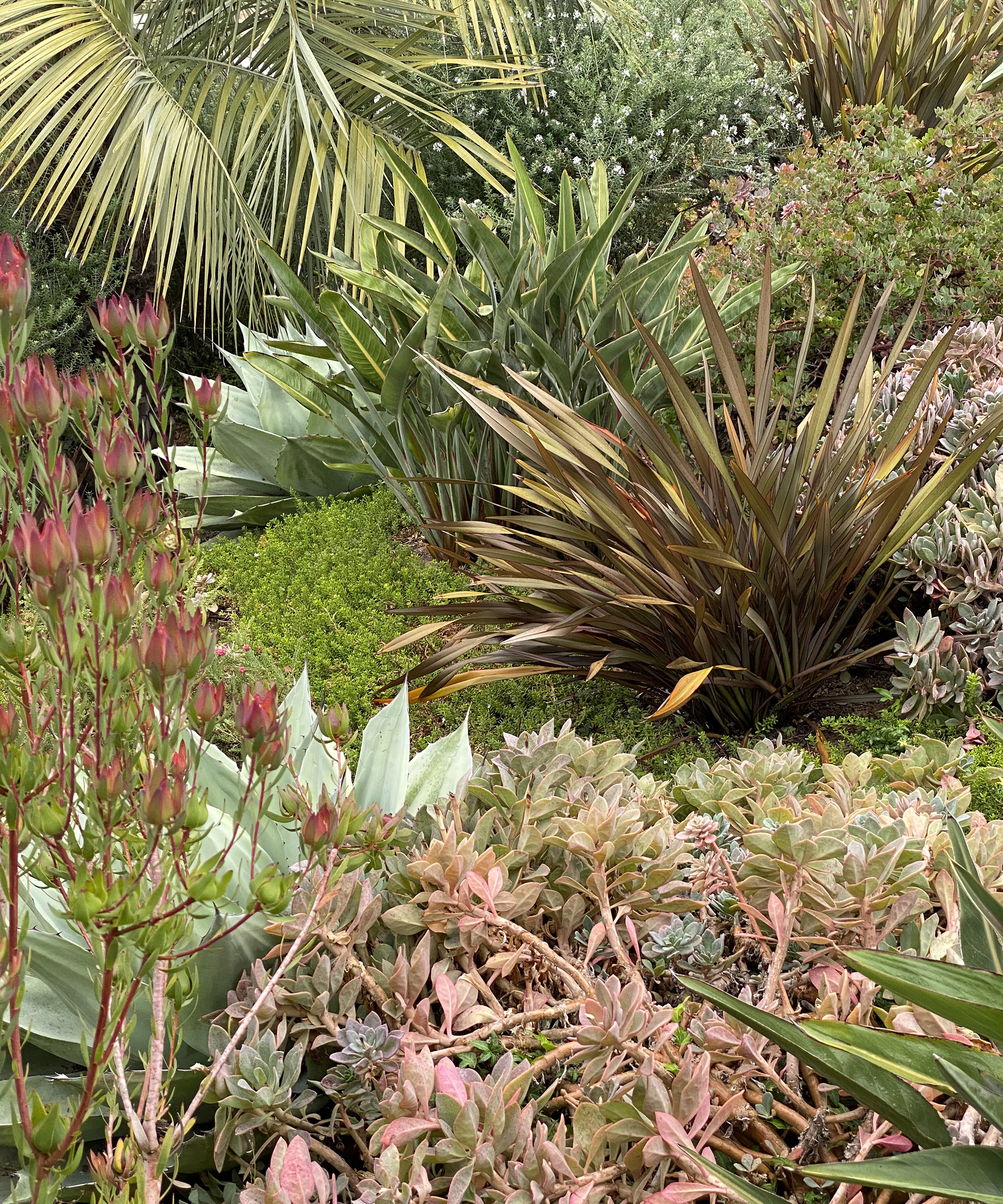
8. Add dry ground cover plants
Lawn grass will turn to straw during prolonged periods of drought, so instead Judy uses low maintenance ground cover plants. These include a mix of North American native fescues, Festuca occidentalis, F. idahoensis and F.rubra, to create a lush green carpet.
'They look wilder than regular lawn grass but are still beautiful and more sustainable,' she says.
Alternatively, opt for shrubby alternatives to grass, such as low-growing thymes, sea heaths (Frankenia), sedums and santolina to create a carpet of foliage and flowers.

9. Introduce a water feature
Water often forms a central feature of dry gardens, adding sound and a refreshing atmosphere. Kendall McCumber suggests including a small water feature, such as a bubbling fountain or bird bath idea, which can create the feel of a desert oasis, and uses much less water than an open pond or cascade.
'Fountains recirculate water and lose only minimal amounts of water to evaporation, and they’re great for attracting wildlife,' he says.
Judy Kameon adds: 'Water bowls and basins are also effective, but add a cover when you’re not using the garden to reduce evaporation.'
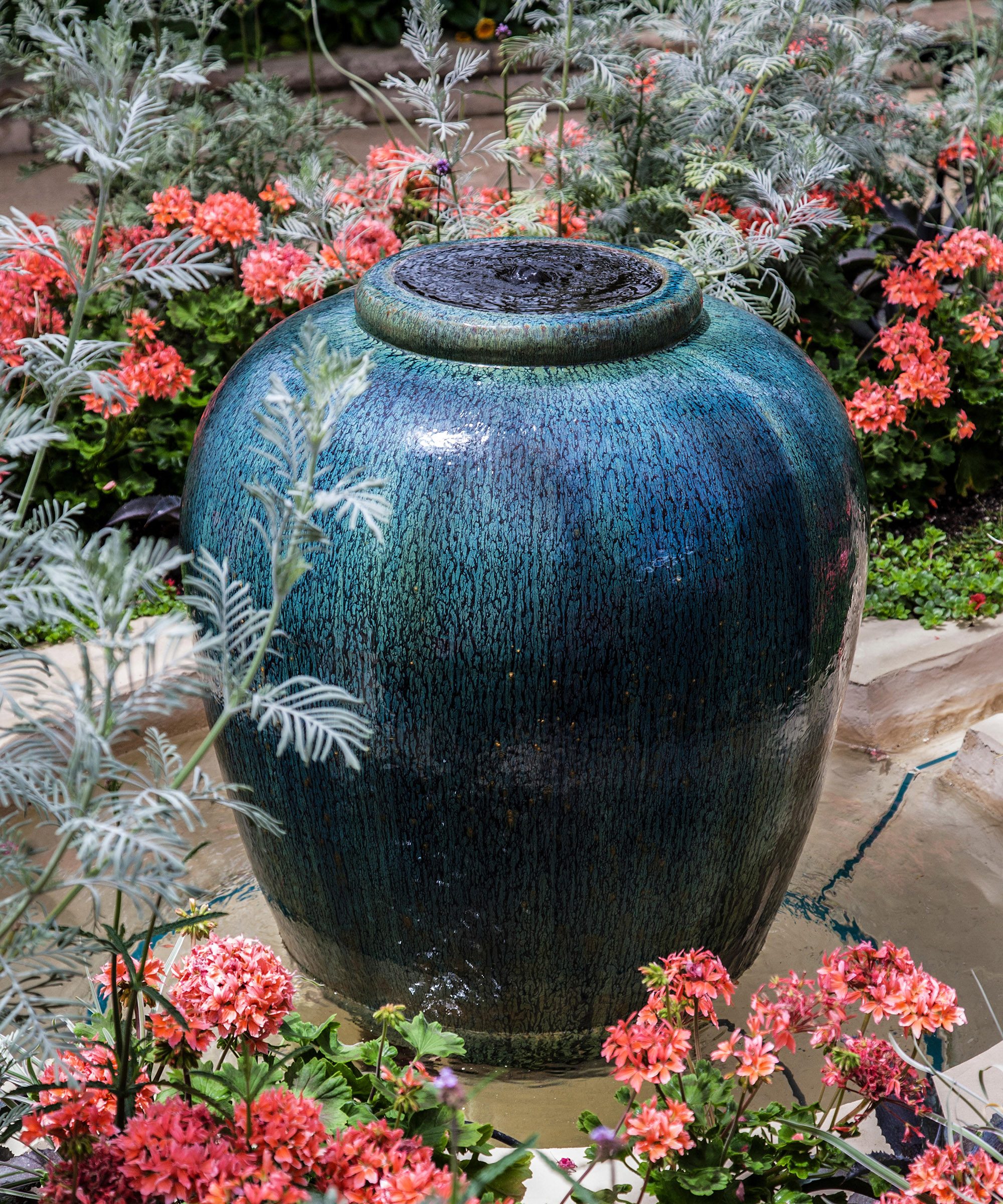
10. Plant up dry garden containers for color and scent
Award-winning designer Libby Russell of Mazzullo + Russell Landscape Design suggests combining drought-tolerant plants in pots to give a longer season of color.
In summer in her Greek garden she uses blue and white agapanthus, salvias such as S. ‘Amistad’ with its tall wands of dark purple blooms, dainty spider lilies (Hymenocallis) and gardenias and jasmine for their delicious scent.
'Make sure your containers have plenty of drainage, use free-draining compost, and the best time to water plants is early in the morning, to reduce evaporation rates,' says Libby. 'Always allow the top few inches of compost to dry out before you water again – I monitor my pots carefully so that the plants are never sitting in wet compost, which would rot them.'
'We also plant herbs in containers,' continues Libby. 'My favorites include Genovese and Greek basil, which have a wonderful, structural rounded shape and are said to bring good luck in this part of the world.'
Succulents and cacti are also ideal for container gardening ideas, while in cooler climes, tender types grown in pots are easier to bring under cover in winter. Plant them in a free-draining compost formulated for cactus and water them every week or two in summer when they are in growth. Allowing the soil to dry out between waterings to prevent root rot, and fungal infections.
Tom Jesch, owner of San Diego speciality plant nursery Waterwise Botanicals uses old pallets as containers to display succulents, giving them a good soak with a hose every week. In cooler climes, keep succulents’ compost dry in winter or when plants are dormant.
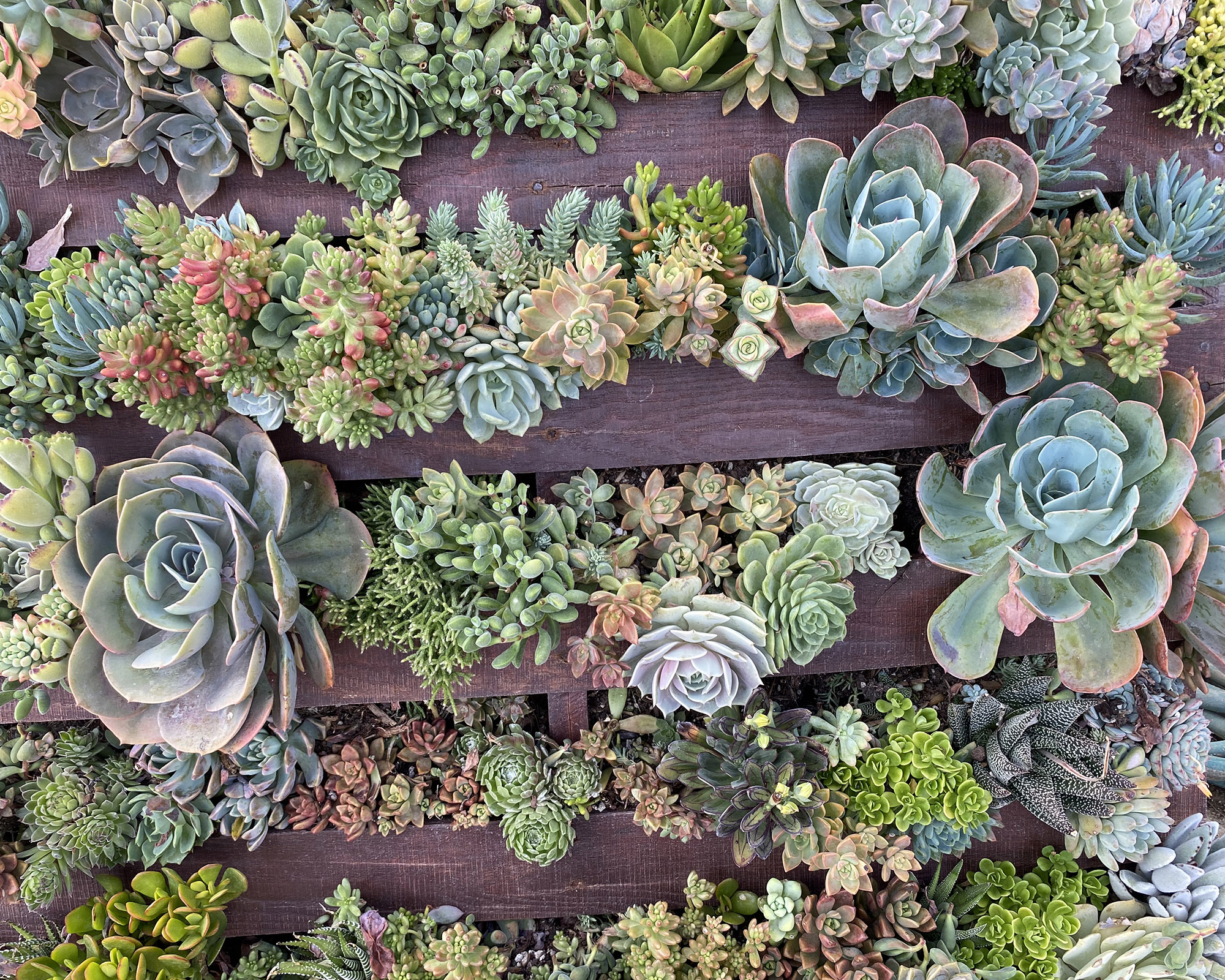
11. Establish your planting well
Tom Jesch recommends planting in free-draining soil at the beginning of the growing season. 'Planting on a slope will also ensure water drains away from the plants,' he says.
For new additions you will need to be watering plants regularly for a few weeks until their roots are established, but then reduce irrigation: 'Your watering regime will depend on the species but, in general, our established landscape roses, ornamental grasses and perennials plants will thrive on one deep watering every week or two during the hottest season; reduce the timing in cooler seasons,' says Tom.
'Cacti and succulents can go longer without water but if you want flowers, water them once every week or two when they’re in growth, but always allow the ground to dry out in between times to prevent the plants from rotting.'

12. Know the annual maintenance needs of your dry garden
Tom recommends pruning shrubs and trees in dry gardens to maintain their shape – check with your nursery or online for the right time to trim your plants.
He says: 'You can also refresh perennial plants and grasses by cutting them back to the ground at the beginning of their growing season to remove their old foliage. Fertilizing plants is also important. Cacti and succulents in the ground benefit from a dose of all-purpose liquid or granular fertilizer once or twice during the growing season.'
'For plants in garden planters, apply a houseplant fertilizer once a month from spring to fall or during their main growth period.' Do not fertilize plants when they are dormant, usually in winter.
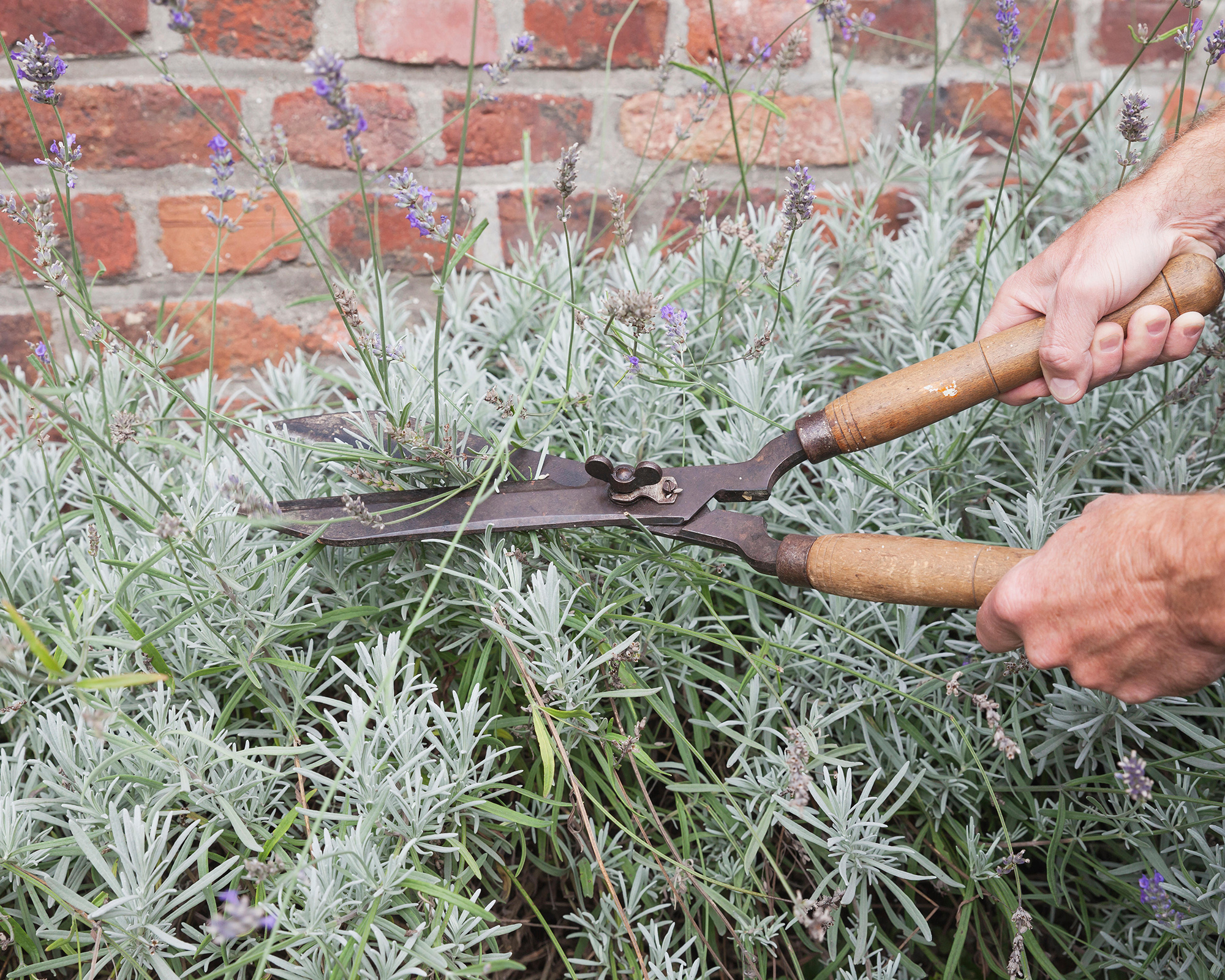
What can I do with a dry area in my garden?
Many plants are adapted to periods of drought and will thrive in dry areas of your backyard. While most prefer sun, some will survive in a little shade, while others won’t tolerate frost, so assess your site, soil and temperature range to check that your chosen plants will suit your conditions.
'Think about what atmosphere you want to create, too,' says designer Libby Russel, who works both in the UK and in Mediterranean gardens. 'Do you want an airy, colorful display of flowers, set off by structural topiary shrubs, or something more desert-like, using a range of succulents?'
Either way, she says, combine contrasting shapes and forms to create a balanced design. 'When landscaping with flowers in dry gardens, use rounded lavenders, santolinas, rock roses (Cistus), Texas sage (Leucophyllum frutescens) and, if your site isn’t too cold in winter, clipped germanders (Teucrium).'
'Then add plants with contrasting spikes such as Gaura, Perovskia and salvias, which all have a long-flowering period. Finally, try planting bulbs in the spaces in between for pops of seasonal color. Good choices for sun and free-draining soil include cyclamen, Tulbaghia, little species tulips and lilies.'
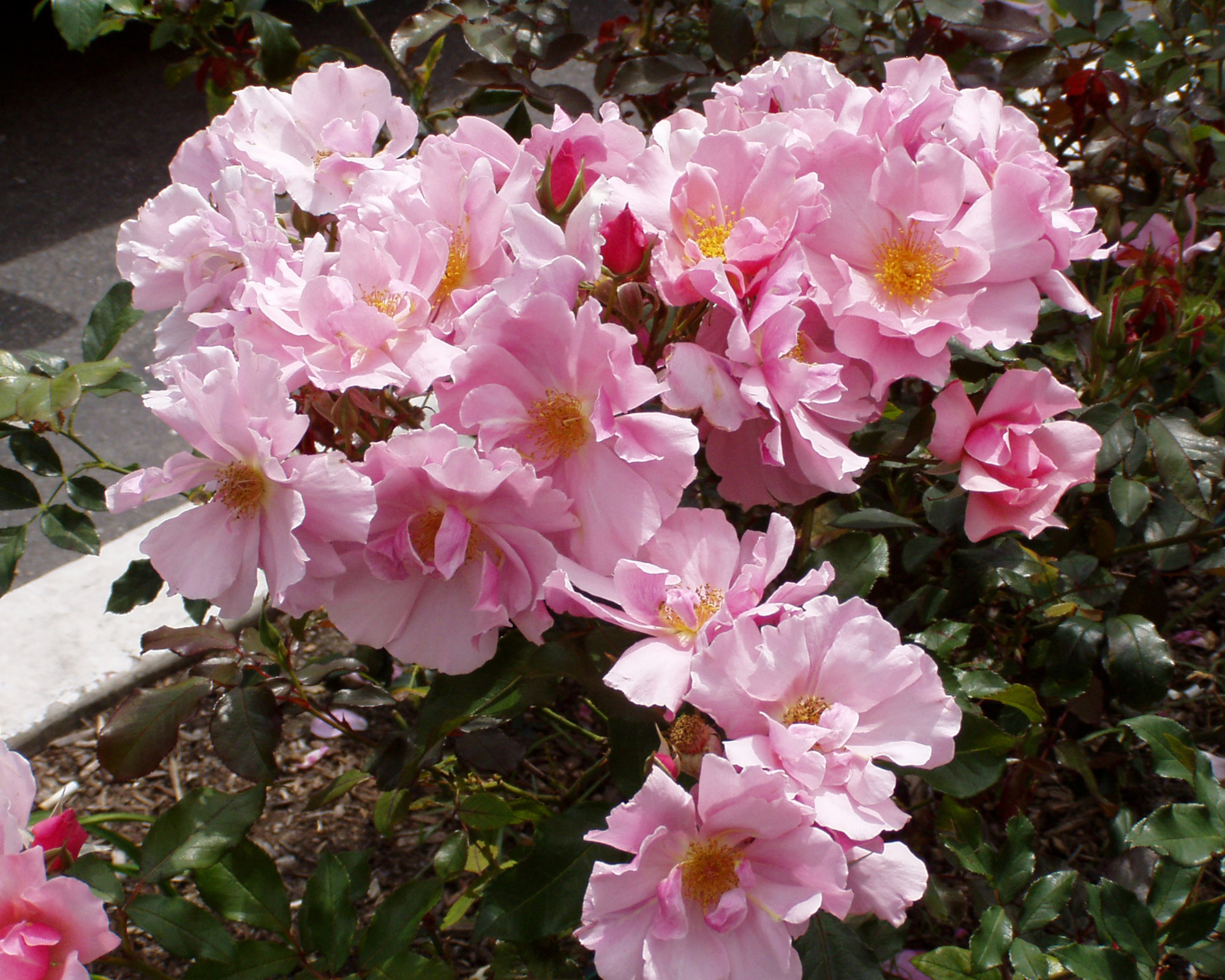
What can I plant in a dry bed?
'Succulents garden ideas and cacti will create great structure and texture and are perfectly adapted to dry climates and very free-draining soil. However, most won’t tolerate high winter rainfall and some will die in low temperatures, so check before buying to make sure your plant choices will suit your climate and garden conditions,' says Tom Jesch.
'For colorful flowers, we also grow ornamental sages (Salvia species), lavenders and low-growing types of roses, which are surprisingly well-adapted to drought and flower here all year round. Our range of low-growing prickly pear cacti (Opuntia species) also bloom for months and are hardy even in northern States of the US.'

Zia Allaway is a garden book author, editor, and journalist, and writes for a range of gardening and women’s magazines, including Easy Gardens, Homes & Gardens and Livingetc, as well as The Guardian and The Daily Telegraph newspapers. She has also written books for the Royal Horticultural Society and Dorling Kindersley publishers, including Eco-Gardening, Compost, Low Maintenance, Practical House Plant Book, Practical Cactus & Succulent Book, Indoor Edible Garden, What Plant Where, and the Encyclopedia of Plants and Flowers.
